The Queen’s Biomechatronics Team (QBMeT) earned first place at the 2025 Applied Collegiate Exoskeleton (ACE) competition. ACE is a student-organized lower-body powered exoskeleton competition first organized in 2018, centered around empowered firefighters and first responders. In the 2025 edition, participating teams had to comply with a 25-page competition rulebook and satisfy a safety inspection checklist. Even though the Exoskeleton Report has highlighted the ACE competition in the past, I have never personally attended it; however, here is something just as good: a full Q&A series with the winning team’s Co-Captain, Elliot Garvin:
Q: For someone who has never attended an ACE competition, how would you describe the event?
Elliot: ACE is a unique and rewarding experience for student engineers and hobbyists. Over 7–8 months, teams develop functional lower-limb exoskeletons designed to support active-duty firefighters. At the competition, our builds are tested both quantitatively for force efficiency and gait support, and qualitatively through firefighter feedback and industry input. The event extends beyond competition, platforming innovation, learning, and collaboration between all participating teams.
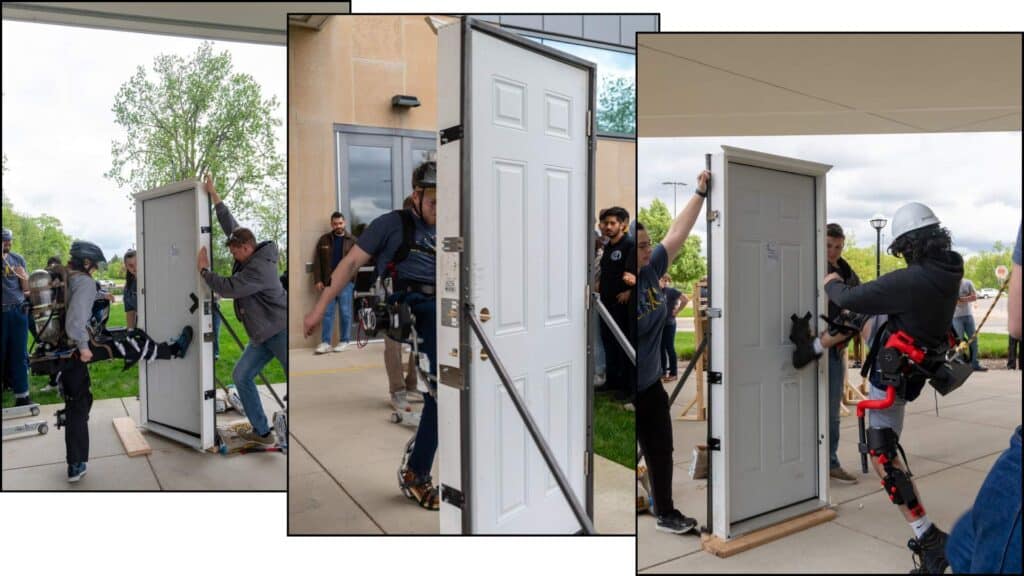
Q: How did your team do in the competition? Who contributed what?
Elliot: Our team, the Queen’s Biomechatronics Team (QBMeT), earned first place at the Applied Collegiate Exoskeleton (ACE) competition! Me and Brett McGonigal spearheaded the team as co-captains and were primarily responsible for the integration of our three subteams, power-systems, software, and structural. This project could not have been completed without the dedication and initiative of our executive team and general members. Power systems focused on power distribution, electrical safety, and data collection. Software was responsible for data processing algorithms and motor control. And structural was responsible for stress testing, materials choices, and ergonomics. Below is the roster of our awesome executive team; we could not have done it without them all!

| Name: | Role: |
| Elliot Gavrin | Co-Captain |
| Brett McGonigal | Co-Captain |
| Lucas de Silva | CTO (Power Sys) |
| William Little | CTO (Software) |
| Matthew Mast | CTO (Structural) |
| Michael Reynolds | Outreach Manager |
| Hannah Bain | Marketing Manager |
| Jaedyn Smail | Treasurer |
Q: Was your 2025 ACE Competition your first time entering the challenge?
Elliot: ACE 2025 was the third time we participated. Our first year, we had no working software, but we succeeded in building a wearable frame and learned a lot from watching other teams. In our second year, we earned 2nd place by using a modified approach with stepper motors. For 2025, we transitioned to brushless motors, prioritizing ergonomics over raw power. We believe accounting for the physical space firefighting equipment and adjusting our focus to more assistive algorithms than software to replace the power from the leg help guide our build in the right direction.
Q: How did you hear about ACE 2025?
Elliot: It was by luck mostly. We were searching online for a North American competition for collegiate level exoskeletons to compete in. The ACE organizers were very new and were open to inviting newly formed teams. We are very grateful for the welcoming community surrounding wearable technology.
Q: What would you like to tell student teams who may be starting exoskeleton or wearable robotics work?
Elliot: Less is more. It’s tempting to aim for full-featured designs right away, but building a functional exoskeleton is all about iteration. You’ll find that developing an exo, it’ll be easiest to start with the bare bones and grow from there. For example, we initially intended on using force sensors in the boot of the wearer, but we decided to forgo it as using only the MPU6050s were capturing more than enough reliable data for our software algorithms. Simplifying made for easier data to process, and streamlined usability.
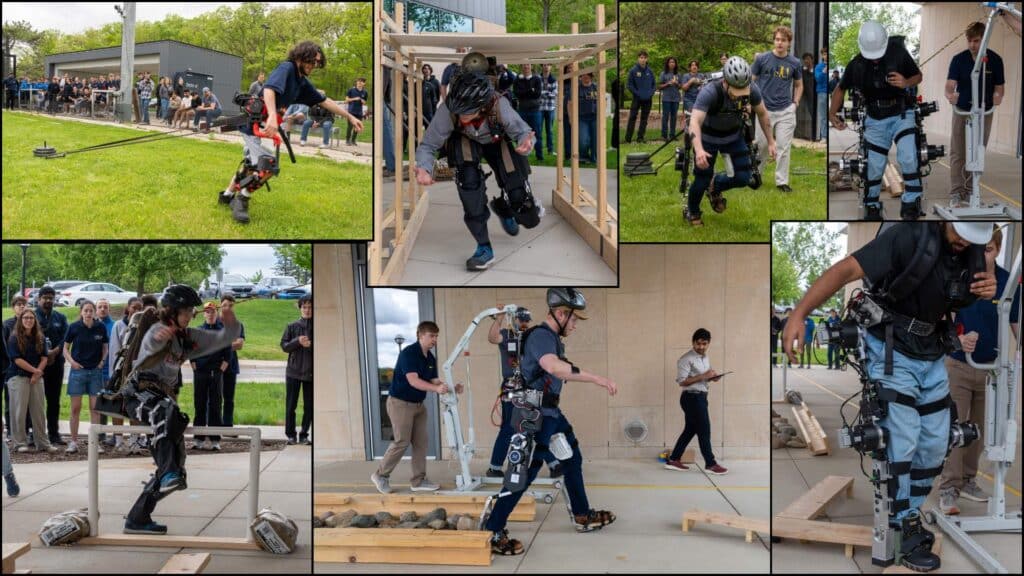
Q: Have you used any of the STEM education wearable kits, like the EduExo or the OpenExo?
Elliot: We haven’t used exoskeleton specific kits, but we intentionally chose components that were well documented and commercially available. In theory, anyone can buy and reassemble our suit more or less from scratch. Open-source kits like these are great for starting out and modifying to fit your project. I’m personally a big advocate for sharing information and collaborating as it lowers the barrier of entry to an expensive field and promotes innovation.
Q: What is next for you and your career and education?
Elliot: I’m currently preparing to apply for graduate programs in biomedical engineering. As for others on our team, many pursue careers in industry or government research in related areas like robotics, ergonomics, and assistive technology, citing QBMeT as an inspiration to pursue those areas.
Q: Any additional comments or impressions that you would like to share?
Elliot: Participating in an engineering design team can be a large commitment but immensely rewarding. If you’re interested in starting your own, I encourage you to contact your university engineering faculty or local maker spaces to see how they can support you in developing human centered technology. Additionally, reaching out to people in the industry whenever you run into issues has been a huge help to us. The exoskeleton community is very welcoming and super helpful!
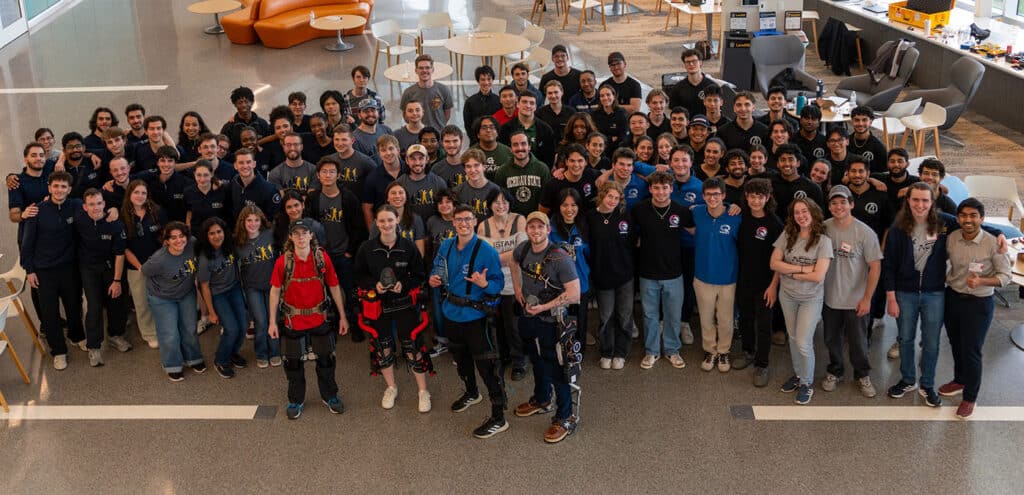
Special thanks to Queen’s Biomechatronics Team (QBMeT) Co-Captain Elliot Gavrin (LinkedIn) for taking the time to shed light on this power exoskeleton competition for first responders. Additionally, sincere appreciation for the photography by the President of M-STARX, Ernesto Malaver Mariñas (LinkedIn). For more information, read through our previous articles on the ACE competition or visit the M-STARX website.


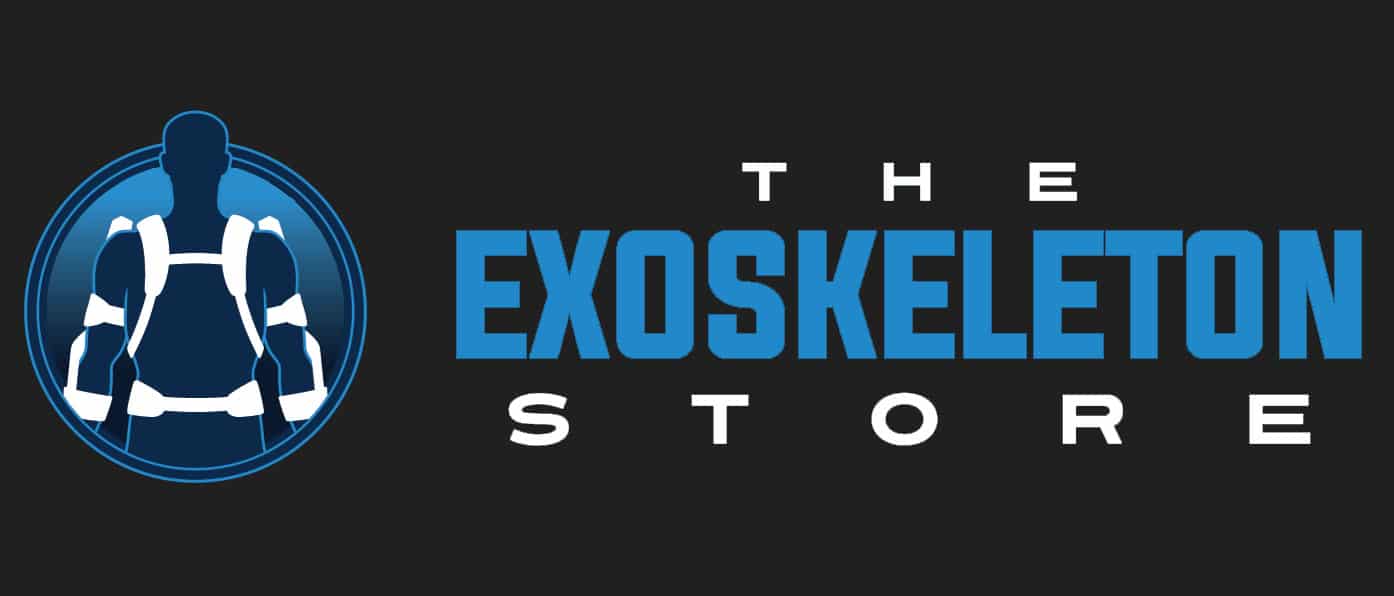
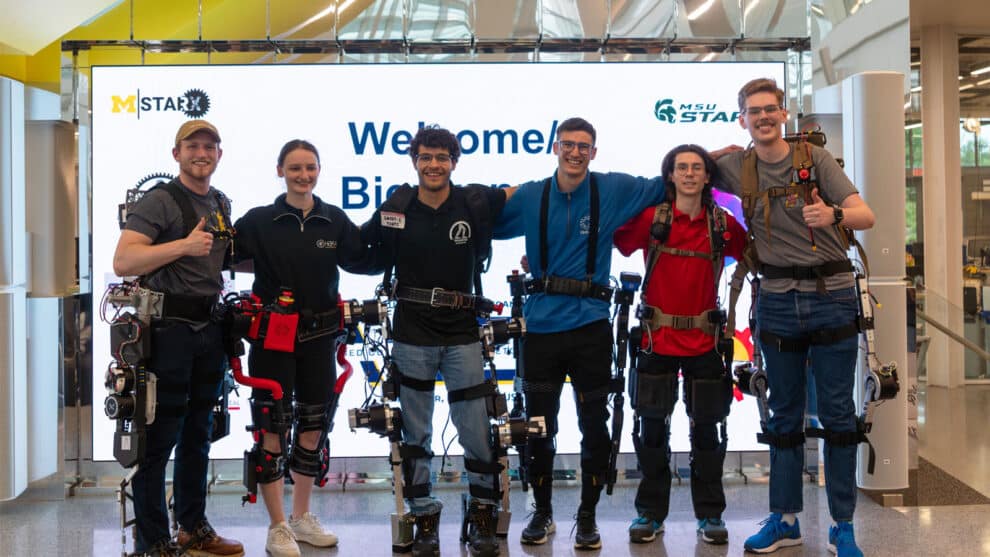


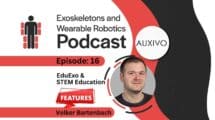

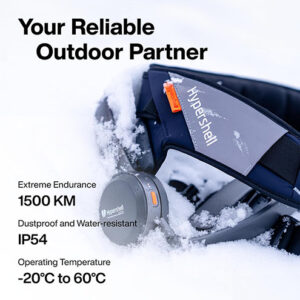

Add Comment